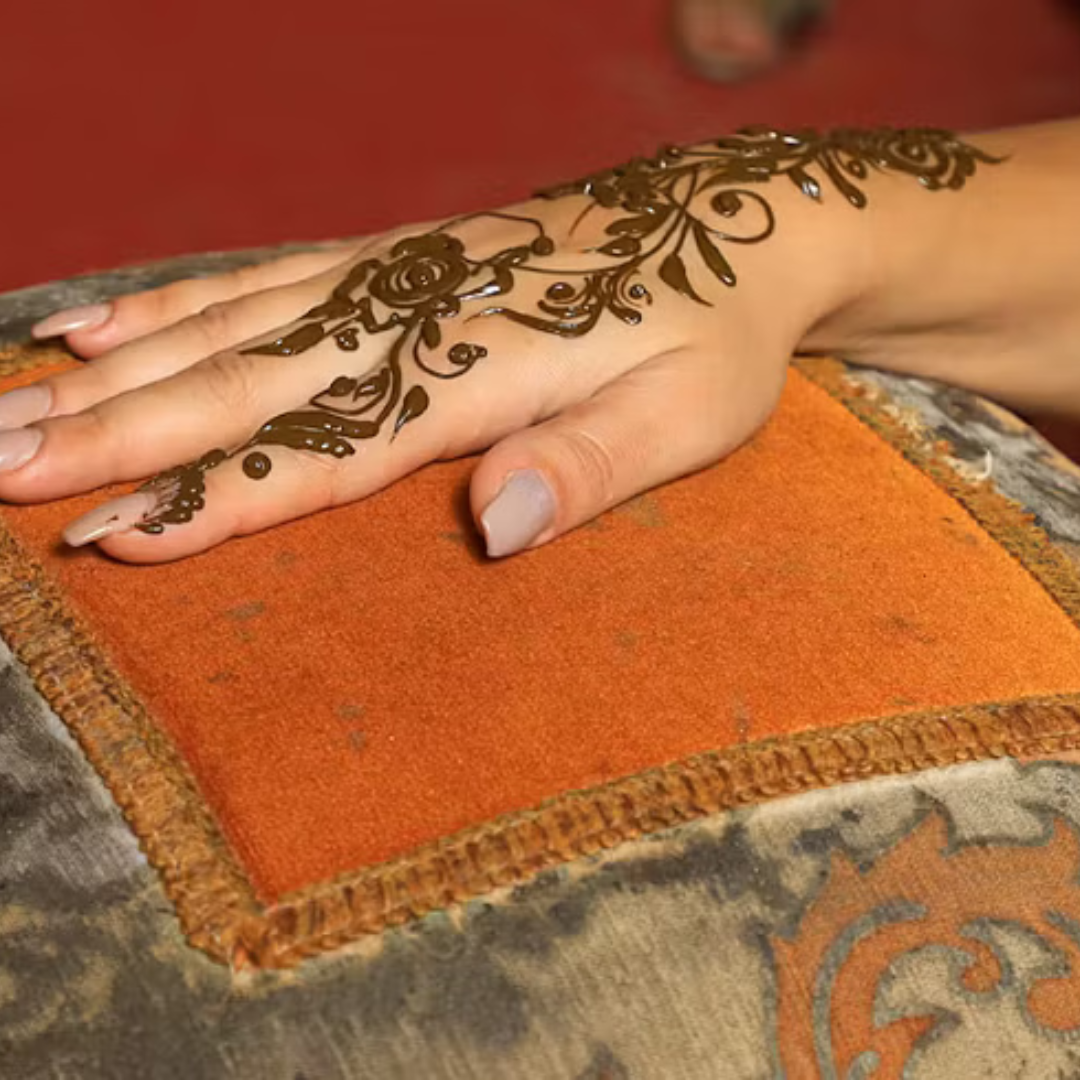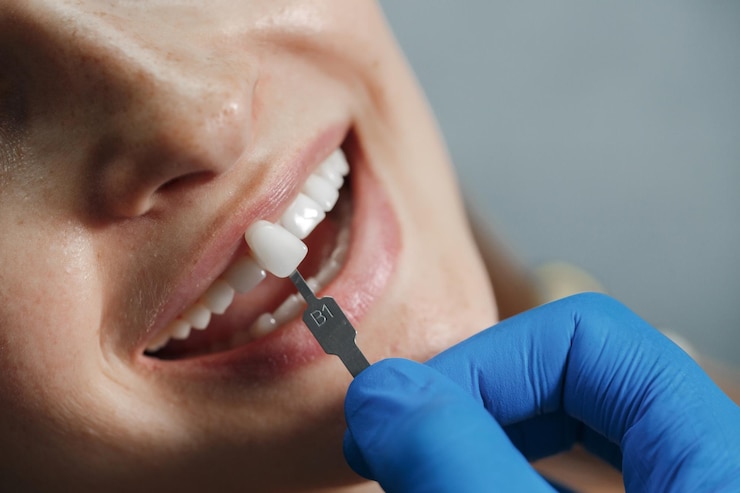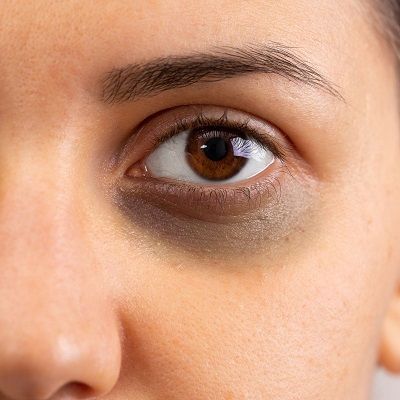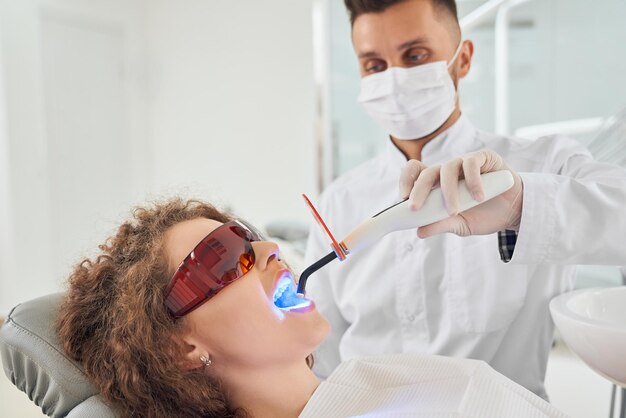 Newsletter Copywriting – Emails That Convert, Not Bore!
Newsletter Copywriting – Emails That Convert, Not Bore!
Metal Braces: Myths and Facts You Should Know
Written by dynamic clinic » Updated on: October 24th, 2024

Metal braces have long been considered the go-to solution for orthodontic treatment, particularly for children and teenagers. Despite advancements in dental technology that have led to the development of various types of braces, Metal Braces in Dubai remain a popular choice for many patients. In this article, we will explore the myths and facts surrounding metal braces, particularly in the context of their use in Dubai.
Understanding Metal Braces
Metal braces consist of brackets made of stainless steel, which are attached to the teeth using a special adhesive. These brackets are connected by a thin archwire, which applies pressure to the teeth, gradually moving them into the desired position. The archwire is secured in place with elastic bands, which come in a variety of colors, allowing for some personalization.

One of the reasons metal braces are commonly chosen in Dubai is their effectiveness in treating a wide range of orthodontic issues, from minor misalignments to severe bite problems.
Common Myths About Metal Braces
Myth 1: Metal Braces Are Just for Kids
One of the most prevalent myths about metal braces is that they are exclusively for children and teenagers. While it’s true that many young patients receive metal braces, adults can also benefit from this orthodontic treatment. In fact, a significant number of adults in Dubai are opting for metal braces as they recognize the importance of a straight smile for both aesthetic and functional purposes.
Myth 2: Metal Braces Are Uncomfortable
Another common misconception is that metal braces are painful and uncomfortable. While it’s true that patients may experience some discomfort after the initial placement of braces or after adjustments, this discomfort is typically mild and temporary. Most orthodontists recommend over-the-counter pain relievers to manage any soreness. Additionally, patients quickly adapt to having braces and often report feeling much more comfortable after the initial adjustment period.
Myth 3: Metal Braces Take Too Long to Work
Many people believe that metal braces require years of treatment to achieve the desired results. While the duration of treatment can vary based on individual circumstances, most patients can expect to wear metal braces for about 18 to 36 months. Factors such as the complexity of the case and the patient's adherence to their orthodontist’s recommendations play a significant role in determining the length of treatment.
Myth 4: Metal Braces Are Always Visible
While it’s true that metal braces are more noticeable than some other orthodontic options, such as clear aligners or ceramic braces, they can still be customized. Patients in Dubai can choose colored elastics to add a fun and unique touch to their braces. Additionally, many adults find that the benefits of metal braces, including their durability and effectiveness, outweigh the concern of their visibility.
Facts About Metal Braces
Fact 1: Metal Braces Are Highly Effective
Metal braces are known for their effectiveness in correcting various dental issues, including overcrowded teeth, gaps, and bite problems. Their robust design allows orthodontists to apply significant pressure to the teeth, leading to more efficient movement. This efficiency is one of the primary reasons why metal braces remain a popular choice in orthodontics, even as newer technologies emerge.
Fact 2: Metal Braces Are Durable
One of the significant advantages of metal braces is their durability. Unlike ceramic braces, which can chip or break, metal braces are made from stainless steel, making them highly resistant to damage. This durability is especially important for active patients, such as athletes, who may be concerned about the wear and tear on their orthodontic appliances.
Fact 3: Metal Braces Are Cost-Effective
While this article does not discuss costs, it’s worth mentioning that metal braces are often more cost-effective compared to other orthodontic options, making them an accessible choice for many patients in Dubai. Their widespread availability and established history in orthodontics contribute to their affordability.
Fact 4: Metal Braces Can Be Personalized
As mentioned earlier, metal braces can be customized with colored elastics, allowing patients to express their individuality. This personalization can make the orthodontic experience more enjoyable, especially for younger patients. The ability to change the color of the bands during each adjustment appointment can be a fun aspect of treatment.
The Importance of Orthodontic Consultations
Before committing to metal braces or any other orthodontic treatment, it is essential for patients to consult with a qualified orthodontist. During this consultation, the orthodontist will evaluate the patient's dental health, discuss treatment options, and create a personalized treatment plan. This step is crucial for ensuring that the chosen method of orthodontic treatment aligns with the patient’s needs and expectations.
Factors to Consider During the Consultation
Dental Health: The orthodontist will assess the patient’s overall dental health, including the condition of the teeth and gums. Any underlying dental issues must be addressed before beginning orthodontic treatment.
Treatment Goals: Patients should clearly communicate their goals and concerns to the orthodontist. This information will help the orthodontist recommend the most suitable treatment options.
Lifestyle Considerations: Lifestyle factors, such as sports participation or cosmetic preferences, may influence the choice of braces. It’s important for patients to discuss these considerations during their consultation.
Duration of Treatment: While the orthodontist can provide an estimate of treatment duration, individual factors will ultimately determine how long a patient needs to wear braces.
Caring for Metal Braces
Proper care and maintenance of metal braces are essential for successful orthodontic treatment. Patients in Dubai should follow their orthodontist’s instructions for oral hygiene and brace care.
Oral Hygiene Tips for Patients with Metal Braces
Brush Regularly: Patients should brush their teeth after every meal to remove food particles and plaque buildup around the brackets and wires. A soft-bristled toothbrush is recommended to avoid damaging the braces.
Use Floss and Interdental Brushes: Flossing can be challenging with braces, but it’s crucial for maintaining gum health. Patients should use floss threaders or interdental brushes to clean between the brackets.
Avoid Certain Foods: Some foods can damage metal braces or get stuck in them. Patients should avoid hard, sticky, or chewy foods that could break brackets or bend wires.
Regular Dental Visits: In addition to orthodontic appointments, patients should continue visiting their general dentist for routine cleanings and check-ups to ensure their overall dental health.
Understanding the Adjustment Period
Patients often undergo an adjustment period after getting metal braces. This time can vary depending on individual circumstances, but it typically includes a few days of discomfort as the teeth begin to shift. Understanding this period can help patients manage their expectations and feel more prepared for the changes that come with braces.
Signs of Adjustment
Soreness in Teeth: It’s common for teeth to feel sore after getting braces or after adjustments. This soreness is usually manageable with over-the-counter pain relief.
Changes in Bite: As the teeth begin to move, patients may notice changes in how their teeth come together. This is a normal part of the adjustment process.
Difficulty Eating: Some patients may find it challenging to eat certain foods during the initial days after getting braces. Soft foods are recommended until patients adjust to their braces.
Tips for a Smooth Adjustment Period
Choose Soft Foods: Eating softer foods can help minimize discomfort during the adjustment period.
Take Pain Relief as Needed: Over-the-counter pain relievers can help alleviate discomfort after getting braces or following adjustments.
Stay Hydrated: Drinking plenty of water can help soothe the mouth and reduce discomfort.
Follow Orthodontist Instructions: Adhering to the orthodontist’s recommendations will contribute to a smoother adjustment process and successful treatment.
The Role of Retainers After Braces
Once the active phase of orthodontic treatment with metal braces is complete, patients will typically need to wear a retainer. Retainers help maintain the teeth's new positions and prevent them from shifting back to their original alignment.
Types of Retainers
Fixed Retainers: These are bonded to the back of the teeth and provide a discreet option for maintaining alignment. Fixed retainers are often used for patients who are at a higher risk of relapse.
Removable Retainers: These are custom-made trays that can be taken out for eating and cleaning. Patients should wear removable retainers as instructed by their orthodontist to ensure the best results.
Importance of Wearing Retainers
Wearing retainers as directed is crucial for preserving the results achieved during orthodontic treatment. Patients who neglect to wear their retainers as prescribed may experience teeth shifting, requiring further treatment to correct.
Conclusion
Metal braces remain a trusted and effective orthodontic treatment option for patients in Dubai and around the world. By understanding the myths and facts surrounding metal braces, patients can make informed decisions about their orthodontic treatment.
Whether you’re considering metal braces for yourself or a loved one, it’s essential to consult with a qualified orthodontist to discuss the best options for your dental needs. With proper care and maintenance, metal braces can lead to a healthier, straighter smile that lasts a lifetime.
This comprehensive understanding of metal braces will help demystify the process and encourage individuals to embrace the journey toward a perfect smile. Remember, the key to successful orthodontic treatment lies in maintaining good oral hygiene, attending regular appointments, and following your orthodontist's advice throughout your treatment.
Note: IndiBlogHub features both user-submitted and editorial content. We do not verify third-party contributions. Read our Disclaimer and Privacy Policyfor details.
Copyright © 2019-2025 IndiBlogHub.com. All rights reserved. Hosted on DigitalOcean for fast, reliable performance.














